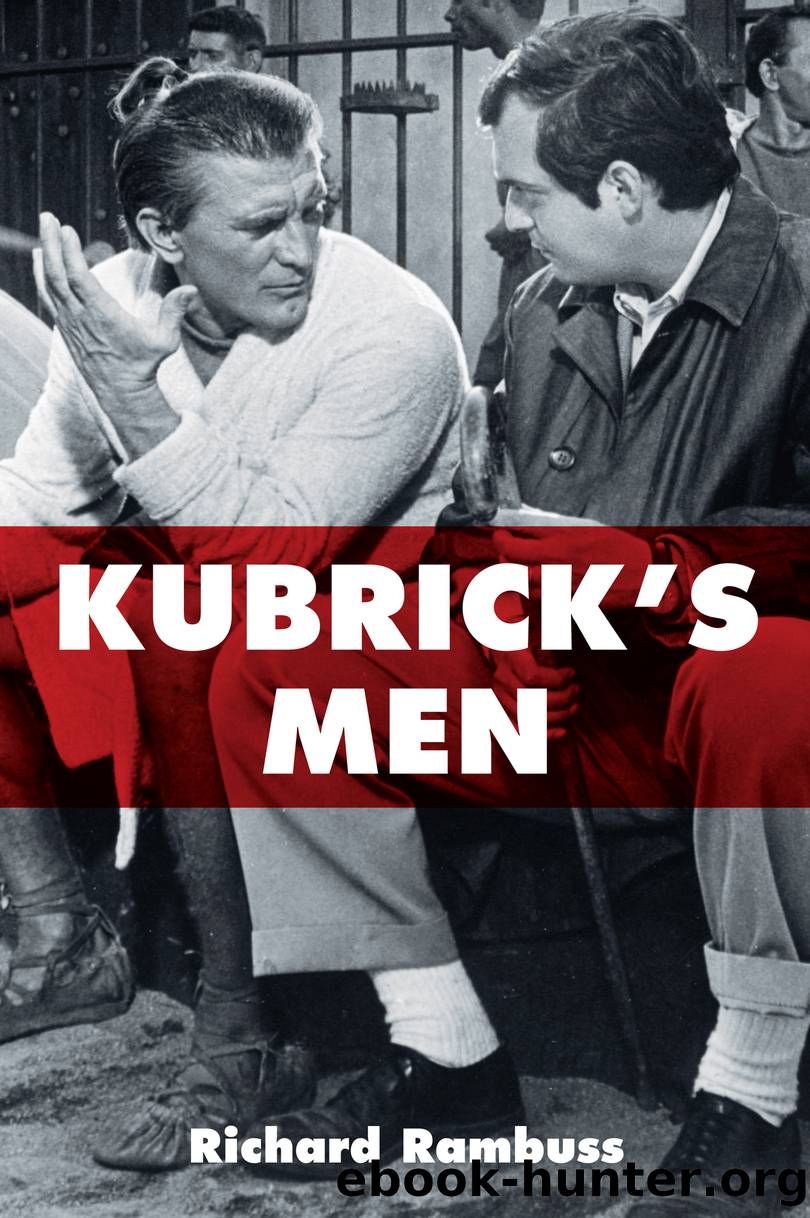Kubrick's Men by Rambuss Richard;

Author:Rambuss, Richard;
Language: eng
Format: epub
Publisher: Fordham University Press
So Barry Lyndon is another of those Kubrick film adaptations that adds some minor homosexual incident or texture that is not part of its literary source. Kubrick, who wrote the screenplay, apparently came up with this scene himself.6 There was a storytelling problem to be solved, and a splash of homosexuality turned out to be the answer to it. But then Kubrick further explains that the whole thing is âpurely expositional,â a mere contrivance of narrative convenience.
Let us return to that drawn-out encounter in Kubrickâs Lolita, discussed in Chapter 3, when Quilty impersonates a cop who seems bent on picking up Humbert at the hotel. In terms of plot, that scene (also not in the book) leads nowhere, even as it goes stutteringly on and on for five minutes of screen time. In contrast, the raison dâêtre of the gay scene Kubrick inserts into Barry Lyndon is, according to Kubrick himself, strictly narratological: no more than just a storyline shortcut to get Barry out of the English armyâand, as it happens, alas, into the far more brutal Prussian army. A drawn-out scene of Barry leading the way for a shirtless muscular and mustached soldier forced to walk the gauntlet for desertion, his hands bound in front of him, provides our introduction to it. This is the martial BDSM scene referred to earlier. It also gives us a foretaste of the male corporal punishment that will play such a prominent role in Part II of the movie, when Barry tyrannically assumes control of the Lyndon estate.
Letâs return to the interpolated homosexual scenes in Lolita and Barry Lyndon, one made during the regime of the Production Code and the other after the industryâs liberation from it. These two scenesâQuilty mock-cruising Humbert at the Overlook and the gay English army officers in the lakeâappear to be, with respect to their ends, opposites. The latter is âpurely expositionalâ (whatever that means), the former expositionally extraneous. But that scene from Lolita and this scene from Barry Lyndon amount to much the same thing: a homosexuality of apparent insignificance. What D. A. Millerâs alluring, ultra-auteur study of Felliniâs 8½ reports in passing about the anonymous good-looking young men who keep popping up in that filmâs background might also be extended to the recurring homosexual presence in nearly all Kubrickâs movies: âThey are there and yet they donât seem to matter; they donât seem to matter and yet they are there; in a word, they merely persist.â7
The way that Kubrick downplays his gay officers may come as a letdown. But the notion of a homosexuality that is merely incidental to Kubrickâs Barry Lyndon, as well as to Kubrickâs menâs films more generallyâand this persistently soâseems to me rather interesting. As if to maintain: What is a menâs film without some homosexual presence, however marginal, some gay ambiance, however evanescent? But then we hardly need Kubrickâs highly wrought cinematic case studies of men and male sexuality to tell us what we otherwise already know from the standard issue
Download
This site does not store any files on its server. We only index and link to content provided by other sites. Please contact the content providers to delete copyright contents if any and email us, we'll remove relevant links or contents immediately.
Kathy Andrews Collection by Kathy Andrews(11678)
The remains of the day by Kazuo Ishiguro(8746)
Paper Towns by Green John(5024)
Spare by Prince Harry The Duke of Sussex(4996)
The Body: A Guide for Occupants by Bill Bryson(4887)
Industrial Automation from Scratch: A hands-on guide to using sensors, actuators, PLCs, HMIs, and SCADA to automate industrial processes by Olushola Akande(4846)
Machine Learning at Scale with H2O by Gregory Keys | David Whiting(3970)
Be in a Treehouse by Pete Nelson(3876)
Harry Potter and the Goblet Of Fire by J.K. Rowling(3737)
Never by Ken Follett(3703)
Goodbye Paradise(3666)
Into Thin Air by Jon Krakauer(3261)
The Remains of the Day by Kazuo Ishiguro(3254)
The Cellar by Natasha Preston(3219)
The Genius of Japanese Carpentry by Azby Brown(3189)
Fairy Tale by Stephen King(3156)
120 Days of Sodom by Marquis de Sade(3118)
Drawing Shortcuts: Developing Quick Drawing Skills Using Today's Technology by Leggitt Jim(2960)
The Man Who Died Twice by Richard Osman(2955)
